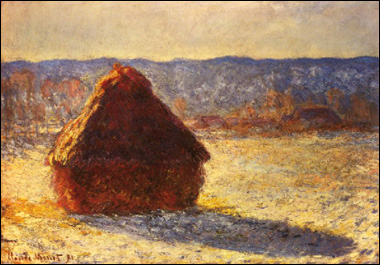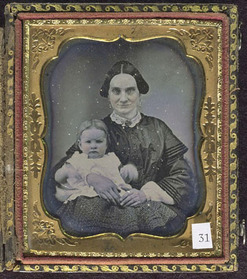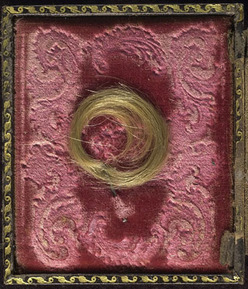Sam Taylor Wood - 'A Little Death' 2002
Jan Lievens (Dutch, 1607–1674), 'Still Life with Books', ca. 1627–1628.
Sam Taylor Wood 'Still Life' 2001
Sam Taylor Wood is an artist, photographer and film maker. Her 2001 Film/animation ‘Still Life’ has the visual look of a 17th Century Dutch still life. Sequences of still photographs are taken over a period of time to show the fruit slowly decaying. This is shown as a piece of video art in a gallery space - it is almost displayed like a painting on the wall. It is similar to time lapse photography used to capture the growth of a plant - who move at a completely different pace to ourselves.
Nicholas Nixon 'The Brown Sisters 1975-2007' 2/16/09
Nicholas Nixon 'The Brown Sisters 1975-2007'
Time has a natural effect on the world around us. Time is a central element of Photography - at it purest form it can be the length of time a shutter is left open for. On another level it can record time - freezing it forever. We cannot see time - we invented clocks to give form to this abstract concept. However, we can see the effects of time - the sun moving over head, a worn step, a landscape eroding or the aging effect on humans. We notice people growing old mainly by looking back at old photographs. The Photographer Nicholas Nixon has Photographed his wife and her three sisters ever year since 1975. He created a Topograhic series. They are informal portraits but the women are always stood in the same order. If you look at the photographs chronologically the change is subtle. However, if you look at a photograph from the 1970's and compare it to a recent one the change is dramatic. Soft skin and features age and show the marks of a life's experience. Individuals faces can still be recognised but, at the same time, can change dramatically.
Rembrandt Self Portrait 1628
We take it for granted that we can document our lives. It is easy for us to create a photographic image of ourselves. Before the invention of photography all portraits had to be drawn by hand. If you couldn't draw you would have to pay an artist. This meant only the rich and successful were immortalised in an image. Rembrandt made self portraits from an early age and left one of the few pre-photographic documents of a person growng old.
Rembrandt, “Self-Portrait in Painter's Costume.” 1660-62Over thirty years separate these two images by Rembrandt and show him transform from a young ambitious artist to an old master. He made a unusually large amount of self portraits that show him in various guises from a mischievous clown, respectable member of society to a lone artist. You can see these varied portraits here and here.
Claude Monet’s haystack.
A group of Monet's Haystacks
Claude Monet was a impressionist painter who was fascinated by light. The warmth of the early morning light, the strong constrast of midday, the golden hour when the sun begins to set, twilight or the diffused light on a cloudy day. When he visited London he didn't see dullness, instead he was amazed by all the different shades of grey and white. During the harvest season of 1890 -91 he returned to the same hay stacks and painted them on site. The same ordinary subject is transformed by observing how the light changes at different times of day and year. Although technically a series of images there is a sense of time passing and the images seem to follow a natural sequence.
Walker Evans 'Postcard Display' 1941
Christian Boltanski, 'Réliquaire' 1990
Christian Boltanski 'A reserva dos suiços mortos' 1991
A Daguerreotype in a decorative case 19th Century
Daguerreotype 'Portrait, Woman and Child, & Lock of Hair' 1840 -60
All Photographs are captured moments in time - a memory given physical form. Early photographs (see the Daguerreotype above) were often placed in decorative cases and sometimes included a lock of hair. This turned the photograph into an actual object, and like the lock of hair, the image had a direct relationship to the subject.
'Hale County, Alabama' 1936
A documentary within a documentary, this picture suggests the way an Alabama tenant family lived, and, in the two snapshots tacked to the wall, bears witness to the family's informal documentation of its own experiences. The photograph was taken by Walker Evans in 1936, while he was employed by the Farm Security Administration; it was the powerful and moving record of rural poverty made by him and his FSA colleagues that popularised the term documentary photography.
Walker Evans - Penny Picture Display, Savannah, Georgia 1936
In this photograph by Evans he has photographed a set of Photographs. This is something he returned to again and again - the layers build up and you are looking at an image of an image. It is a shop window display in a penny photo arcade - people would go in to have a portrait taken as a memory. WE photograph ourselves to prove we existed - we were here. These original images are not art in themselves but Evans photographs them and draws our attention to them. The act of using the work of others is know as Appropriating.
Walker Evans photo of photo
'Tattoo Parlor, NYC' circa 1958 by Robert Frank from 'The Americans'
Album Cover for the rolling stones 'Exile on Main street'
Robert Frank exile on main street
Christian Boltanski 'A reserva dos suiços mortos' 1991
Peter Blake - The Toy Shop 1962
Blake was interested in a wide range of cultural forms, from high art to pop music and children’s toys. Like many young ‘Pop’ artists of the time he was fascinated by American popular culture, such as denim jeans and the music of Elvis, which arrived in Britain in the late 1950s.
Alongside this, Blake retained a strong interest in English popular culture. His work suggests a sense of nostalgia for the paraphernalia of his childhood. Blake collected old toys and related imagery; this piece developed as both a work of art and a store for his collection of objects. Hotel Eden by Joseph Cornell
Soap Bubble Set by Joseph Cornell
Joseph Cornell collected objects and placed them inside boxes - creating strange juxtapositions and narratives. A Map, a pipe, an egg, a glass combined using a grid system as a compositional device. These strange assemblages and collages give new meanings to discarded objects.



























